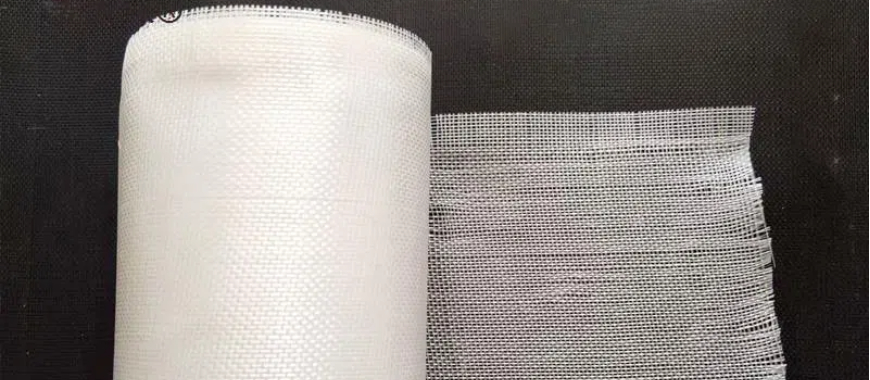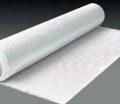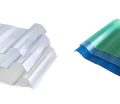
Sting roving fiberglass is a type of continuous fiberglass filament used in composite materials. It is known for its high strength and chemical resistance, making it ideal for a variety of industrial applications. This type of fiberglass is typically used in manufacturing processes like pultrusion and filament winding. Its primary function is to reinforce resin-based systems, enhancing the overall durability of the final product. Sting roving fiberglass is lightweight yet strong, making it an essential component in industries such as construction, automotive, and aerospace. By providing additional reinforcement, it ensures that composite structures remain stable, resistant to corrosion, and capable of withstanding environmental stresses.
Key Features of Sting Roving Fiberglass
High Strength and Durability
Sting roving fiberglass is widely recognized for its impressive strength. This material can withstand significant stress without breaking, making it perfect for applications requiring structural integrity. It remains durable even in demanding conditions, providing long-lasting reinforcement in composite materials.
Lightweight for Versatility
Despite its high strength, sting roving fiberglass is lightweight, which enhances its usability. This characteristic makes it easier to handle during the manufacturing process and allows for more flexible applications. Its low weight also contributes to reduced transportation costs and less strain on structures.
Chemical Resistance
One of the most notable features of sting roving fiberglass is its chemical resistance. It performs well in environments exposed to harsh chemicals, preventing corrosion or degradation over time. This makes it an ideal choice for industries like automotive, aerospace, and construction, where chemical exposure is common.
Versatility in Applications
Sting roving fiberglass is used in various manufacturing processes, including pultrusion and filament winding. Its versatility allows it to reinforce a wide range of products, from pipes and tanks to vehicle components. The ability to adapt to different resin systems further enhances its application scope.
Fiberglass Fence Posts: Durable and Long-Lasting Solution
Sting Roving Fiberglass Price Factors
Raw Material Costs
The price of sting roving fiberglass is influenced by the cost of raw materials used in its production. Fiberglass production requires silica, limestone, and other minerals. Fluctuations in the cost of these materials can impact the final price.
Manufacturing Processes
The complexity of the manufacturing process also affects the price. More advanced production techniques, such as specialized coatings or customized designs, can result in higher prices for sting roving fiberglass.
Regional Pricing Variations
Pricing for sting roving fiberglass varies between regions due to local production capabilities and demand. Areas with higher demand or fewer local manufacturers may experience higher costs, while regions with established production facilities often offer more competitive pricing.
Shipping and Logistics Costs
Transportation and shipping costs also contribute to the overall price of sting roving fiberglass. The lightweight nature of the material helps reduce shipping costs, but long-distance transport or specialized shipping requirements may increase the final price.
Customization Options
If customization is required, such as specific sizing or enhanced chemical coatings, the price of sting roving fiberglass can increase. Customization adds value to the product but may also extend production times, affecting overall costs.
Sting Roving Fiberglass for Sale
Availability of Sting Roving Fiberglass
Sting roving fiberglass is readily available in many regions, making it accessible for various industries. Suppliers offer it in multiple forms, allowing businesses to choose specific sizes and quantities based on their needs. Due to its versatility, sting roving fiberglass is used in numerous sectors, ensuring consistent demand and steady supply across the market. Depending on the location, purchasing options may include direct suppliers, online platforms, or distributors specializing in fiberglass products.
How to Assess Quality Before Purchasing
When purchasing sting roving fiberglass, it’s crucial to assess the quality to ensure it meets the necessary standards. First, inspect the fiber consistency and check for uniformity across the roving. High-quality sting roving fiberglass will have a smooth, consistent texture, free from irregularities. Second, consider the tensile strength specifications, as this is a critical factor in most applications. Materials with higher tensile strength provide better performance under stress. Third, evaluate the product’s chemical resistance, especially if it will be used in harsh environments. Always request technical data sheets and performance reports to verify these features. Finally, ensure the fiberglass is compatible with the resin system used in your project.
Applications of Continuous Sting Roving Fiberglass
Industrial Uses in Construction, Automotive, and Aerospace
Continuous roving fiberglass plays a crucial role in several major industries. In construction, it is often used to reinforce concrete structures, providing added strength and durability. Automotive industries rely on continuous roving fiberglass to manufacture lightweight yet strong vehicle components, reducing overall weight without compromising safety. In the aerospace sector, this fiberglass is used to create durable, high-strength composite materials for aircraft, ensuring that they can withstand extreme conditions without adding excessive weight.
How Continuous Roving Differs from Other Fiberglass Forms
Continuous sting roving fiberglass differs from other forms of fiberglass, such as chopped strands or mats, in both structure and application. It consists of long, unbroken strands of glass fibers, which provide superior strength and flexibility. Unlike chopped fiberglass, which is better suited for localized reinforcement, continuous roving is ideal for creating large, continuous sections of composite material. This form of fiberglass is particularly useful in processes like filament winding and pultrusion, where long fibers are required to enhance structural integrity.
Woven vs. Chopped Fiberglass
Comparison of Woven Fiberglass and Chopped Fiberglass
Sting roving fiberglass can be used in both woven and chopped forms, each offering different properties. Below is a comparison of woven fiberglass and chopped fiberglass to highlight their distinctions:
| Feature | Woven Fiberglass | Chopped Fiberglass |
|---|---|---|
| Structure | Long continuous fibers woven into a fabric | Short, randomly arranged fibers |
| Strength | High tensile strength and flexibility | Moderate strength, suitable for localized use |
| Application Method | Used in processes like lay-up and molding | Typically used in spraying or pressing processes |
| Surface Finish | Provides a smooth, uniform surface finish | More texture, less smooth compared to woven |
| Best for | Large, continuous sections requiring strength | Smaller areas needing reinforcement or repairs |
Which One is More Suited for Specific Applications
Woven fiberglass is ideal for applications where strength and flexibility are needed over large areas. It is commonly used in the construction of boat hulls, vehicle panels, and structural reinforcements. The continuous strands ensure higher tensile strength and better load distribution. On the other hand, chopped fiberglass is more suited for localized reinforcement or repairs. It is often used in areas that do not require high structural integrity but need added strength or fill. Sting roving fiberglass can be woven or chopped, offering versatility for different project needs.
Sting Roving Fiberglass Matting for Epoxy Resin
How Fiberglass Matting Works with Epoxy Resin in Composite Projects
Fiberglass matting, made from chopped strands, works exceptionally well with epoxy resin in composite applications. The matting is typically laid into a mold or surface and then saturated with epoxy resin. The resin penetrates the mat, binding the fibers together to form a strong, durable composite. Sting roving fiberglass matting provides structural reinforcement and is especially useful in creating smooth, seamless finishes. The combination of fiberglass matting and epoxy resin results in a rigid, lightweight material that offers excellent resistance to corrosion and environmental factors.
Benefits and Application Techniques
The benefits of using fiberglass matting with epoxy resin include enhanced strength, durability, and resistance to moisture and chemicals. This combination is commonly used in industries such as marine construction, automotive, and aerospace due to its ability to form robust, long-lasting components. Application techniques vary based on project requirements. For smaller, detailed sections, the matting can be cut and layered to achieve the desired thickness. In larger projects, such as boat hull construction, multiple layers of fiberglass matting are applied and saturated with epoxy resin to build up strength. Sting roving fiberglass matting provides flexibility in application while ensuring consistent performance.
Fiberglass Fencing Solutions for Long-Lasting Outdoor Protection
Sting Roving Fiberglass Fabric and Resin Compatibility
The Importance of Compatibility Between Fiberglass Fabric and Various Resins
When working with sting roving fiberglass, ensuring compatibility between the fiberglass fabric and the resin system is crucial for achieving optimal performance. If the fiberglass and resin are not compatible, the bond between them may weaken, leading to structural failures in the composite material. Compatibility is key to maximizing the strength, durability, and overall integrity of the final product. For instance, using an incompatible resin can result in poor adhesion, reduced chemical resistance, or uneven curing. Proper resin-fabric compatibility ensures that the fiberglass can reinforce the composite effectively, providing the expected mechanical and thermal properties.
Types of Resins Used with Fiberglass
Several types of resins are commonly used with sting roving fiberglass, each suited for specific applications. Epoxy resin is frequently chosen for its superior adhesion, chemical resistance, and durability, making it ideal for aerospace and automotive industries. Polyester resin is another option, offering a cost-effective solution with good mechanical properties, commonly used in marine and construction applications. Vinyl ester resin bridges the gap between epoxy and polyester, providing enhanced chemical resistance and toughness. For specialized needs, polyurethane and phenolic resins are sometimes employed, each with unique benefits based on the project’s environmental conditions and performance requirements.
Sting Roving Fiberglass Mat for Epoxy Resin Applications
Overview of Fiberglass Mats Used in Epoxy Resin Systems
Fiberglass mats, including those made from sting roving fiberglass, are widely used in epoxy resin systems to create strong, lightweight composites. These mats consist of short strands of fiberglass, either chopped or continuous, bound together to form a flexible sheet. When applied to a surface and saturated with epoxy resin, the fiberglass mat bonds with the resin to create a reinforced layer. This method is especially useful in manufacturing applications that require durable, lightweight materials, such as boat hulls, vehicle parts, and industrial equipment. The fiberglass mat serves as the reinforcing agent, while the epoxy resin provides the matrix that holds everything together.
Key Advantages of Using Mats in Resin Applications
One of the primary advantages of using fiberglass mats in epoxy resin applications is the uniform reinforcement they offer across large surfaces. This ensures that the composite material is consistently strong and resistant to cracks, moisture, and chemical exposure. Sting roving fiberglass mats are particularly effective at providing structural integrity without adding unnecessary weight, making them perfect for projects where weight is a concern, such as in aerospace and automotive industries. Additionally, fiberglass mats are easy to mold and shape, which allows for flexibility in design and application. The mats also work well in complex molds, ensuring that every surface is reinforced, even in challenging geometries.
Essential Polypropylene Fiberglass Fabric for Long-Lasting
Common Uses of Sting Roving Fiberglass in Construction
How Fiberglass is Used in Construction Materials for Reinforcement and Repair
Fiberglass plays an essential role in construction, particularly in reinforcing and repairing materials. Sting roving fiberglass is often incorporated into concrete, plaster, and other building materials to enhance their strength and durability. It helps prevent cracking and structural damage, especially in high-stress areas such as walls, ceilings, and columns. The material also contributes to the reinforcement of lightweight panels, insulation, and roofing materials, providing long-lasting support while maintaining flexibility. Additionally, fiberglass is frequently used in repairs, such as patching cracks or reinforcing weakened structures, ensuring they regain their original integrity without the need for complete replacement.
Why Sting Roving Fiberglass is Ideal for Construction Projects
Sting roving fiberglass is highly suitable for construction projects due to its exceptional combination of strength and lightweight properties. It offers superior tensile strength, allowing it to withstand heavy loads and environmental stresses without compromising the structure’s integrity. Moreover, its resistance to corrosion and moisture makes it ideal for outdoor applications, such as reinforcing concrete beams or pillars exposed to the elements. The lightweight nature of sting roving fiberglass also makes it easier to transport and install, reducing labor costs and making it more efficient for large-scale projects. Furthermore, it is compatible with various construction materials, making it a versatile choice for diverse applications.
Choosing the Right Sting Roving Fiberglass
Selecting the Appropriate Fiberglass for Your Needs
When selecting sting roving fiberglass for your project, it’s essential to consider the specific requirements of the application. Different types of fiberglass offer varying levels of strength, durability, and chemical resistance. By understanding the needs of your construction or industrial project, you can choose the type of fiberglass that provides the right balance of reinforcement and flexibility.
Consideration of Price, Quality, and Application When Making a Purchase
Price is an important factor when purchasing sting roving fiberglass, but it shouldn’t be the only consideration. It’s crucial to assess the quality of the fiberglass, as higher-quality materials will offer better performance and longevity. Additionally, consider the specific application: for heavy-duty construction projects, stronger, more durable fiberglass may be worth the investment, while lighter options might suffice for less demanding uses. Ensuring compatibility with the materials in your project will also help in making the right choice for long-term success.
FAQs about Sting Roving Fiberglass
Fibreglass roving is a collection of continuous glass fiber strands grouped together to form a bundle. These strands are twisted or untwisted depending on the intended use. Fibreglass roving is typically used in the production of composite materials and is known for its high strength and durability. It is often used as a reinforcement in various resins, such as epoxy or polyester, to create strong, lightweight composite products. Fibreglass roving offers excellent resistance to corrosion, making it ideal for industrial applications like construction, automotive, and marine industries. The versatility of fibreglass roving allows it to be molded into various shapes and sizes to suit different manufacturing processes.
Fiberglass roving is produced by drawing molten glass through fine nozzles, creating continuous strands of glass fibers. These fibers are then bundled together to form roving, either twisted or left untwisted, based on the application. The process begins by melting raw materials such as silica, limestone, and other minerals at high temperatures. The molten glass is pulled through bushings, which are small holes in the bottom of the furnace, to form thin glass filaments. These filaments are coated with a sizing agent to protect them and enhance their bonding with resins. Afterward, the filaments are wound onto a spool or drum, ready to be used in composite manufacturing processes.
Woven fiberglass is a fabric made by interlacing continuous strands of fiberglass, which provides high strength and stability. It is widely used in various applications that require reinforcement, such as boat hulls, car bodies, and wind turbine blades. Woven fiberglass offers excellent tensile strength and flexibility, making it suitable for both large-scale industrial projects and smaller, intricate designs. Its ability to resist moisture, chemicals, and extreme temperatures adds to its versatility. Additionally, woven fiberglass is used in structural applications, where its lightweight properties combined with durability enhance performance. It’s also commonly employed in the aerospace and automotive industries for creating strong yet lightweight components.
Woven roving is a heavy-duty fiberglass fabric, created by weaving continuous roving strands into a fabric form. It is primarily used in applications requiring significant strength and reinforcement, such as in boat building, construction of storage tanks, and wind energy components. Woven roving is often used in combination with resin systems like epoxy or polyester to create composite materials with enhanced structural integrity. Its high tensile strength allows it to provide reinforcement in large structures while maintaining a relatively lightweight profile. Woven roving is particularly valued for its ease of handling, making it suitable for hand lay-up processes and molding large, complex shapes.

As the editor of GangLong Fiberglass, I have years of experience and in-depth research, focusing on cable tray products, fiberglass solutions, and grille systems. I incorporate years of industry insights and practical experience into every content, committed to promoting the progress of the industry. At GangLong Fiberglass, my commitment is reflected in every product, from innovative cable trays to durable fiberglass solutions and sturdy grille systems. As an authoritative voice in the industry, my goal is to provide valuable information to professionals and businesses and promote forward-looking solutions.


